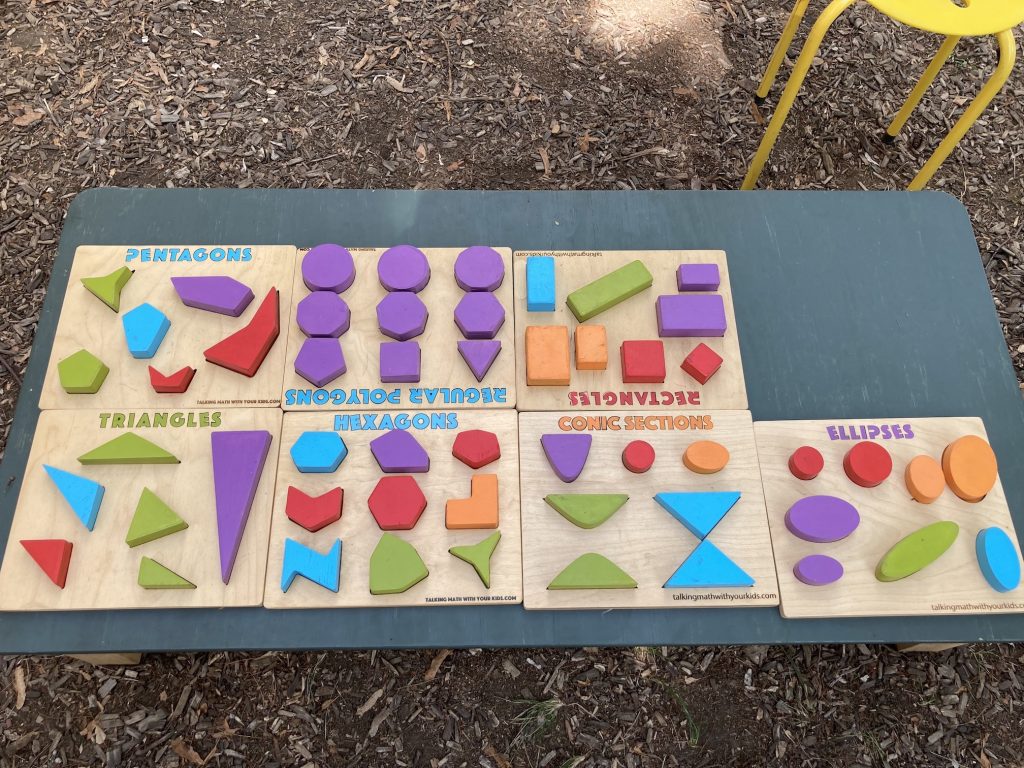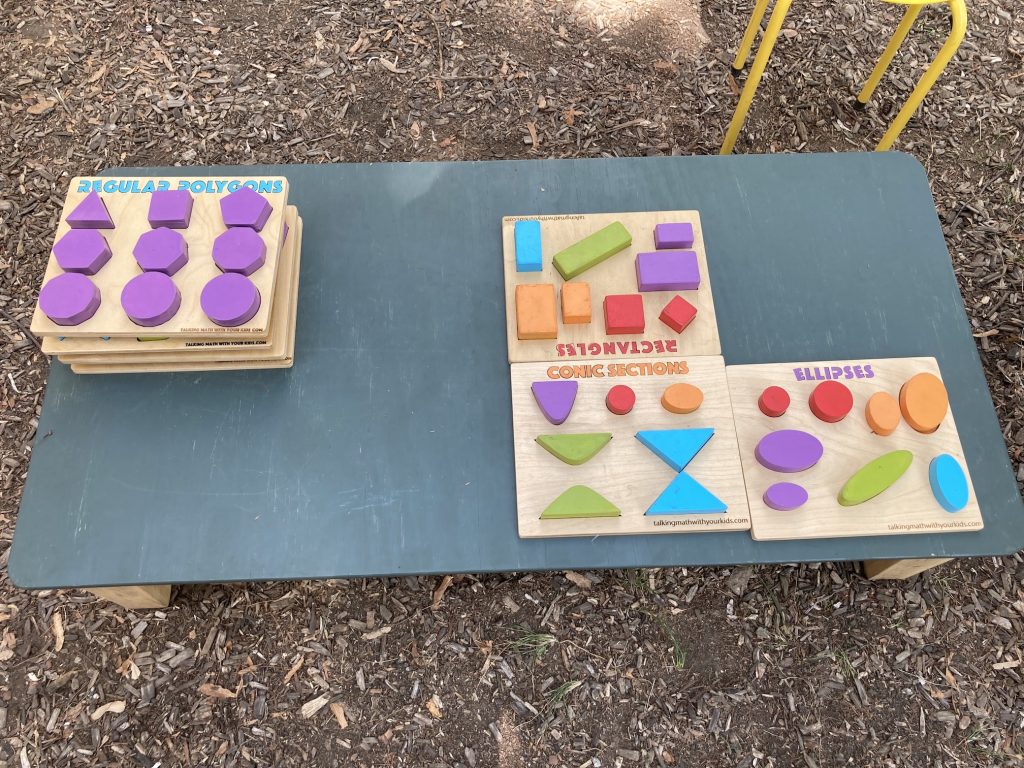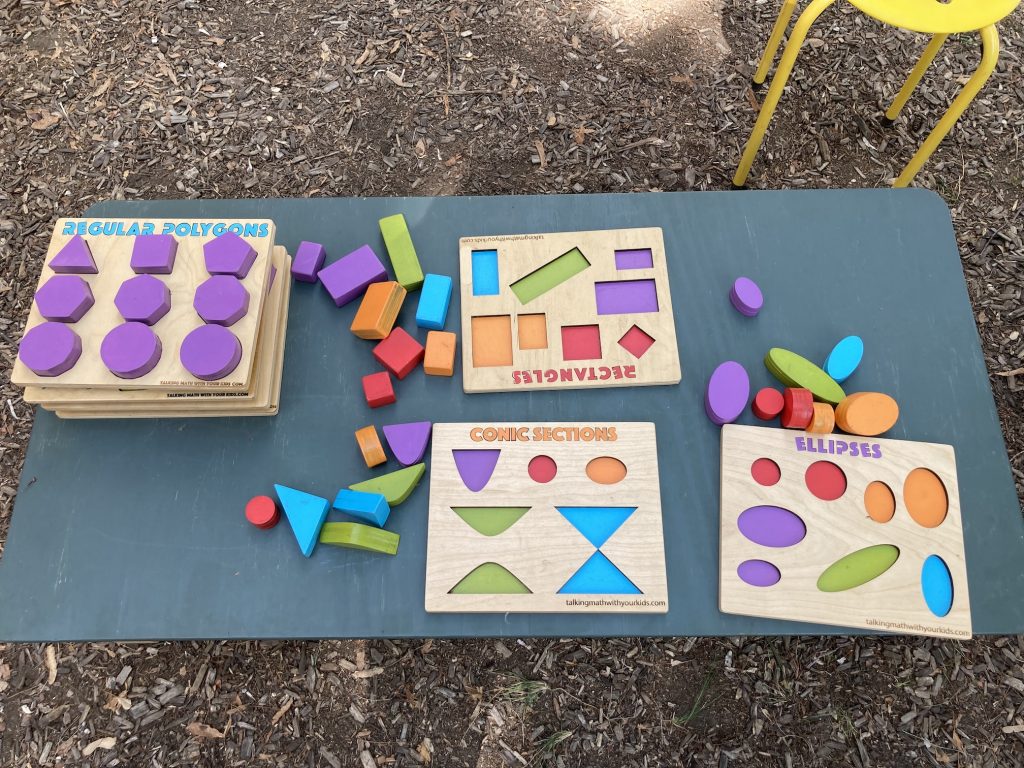At Math On-A-Stick, we have a puzzle table for the youngest fairgoers. The table is low to the ground, near an entrance to the space, and filled with colorful, chunky shapes—durable and sized for chunky toddler hands.
Here are three typical states of the puzzle table during the day.

Neat and tidy 
Stacked and tidy 
Stacked and messy
Which one of these generates the most engagement?
I’m talking about two correlated measures of engagement—(1) percentage of children who play with them, and (2) average length of time they play.
Of course, we have not studied this question with the rigor of the Playful Math Learning team at Vanderbilt University, but we do have many hours of observation.
Stacked and messy wins the day.
Stacking a few puzzles makes space for children to maneuver the blocks, rearrange them, and to play with them in novel ways. Also, stacked gives the impression of plenty. There is LOTS to do here! Of course, the same impression is given when they’re all laid out, so stacking is in contrast to putting away (a/k/a hiding) the additional puzzles.
Messy is essential.
To understand why, imagine yourself visiting a friend’s house. The friend has two card tables out, each with a different 1000-piece puzzle. One of those puzzles is complete; the other has the border finished maybe, but there are still lots of scattered pieces on the table, yet to be assembled. How do you interact with each puzzle?
Probably, you admire or study the assembled puzzle, but you do not touch it. And you are much more likely to touch the other one, and put a few pieces in place while you and your friend chat or you wait for them to finish getting ready for your outing together.
It’s the same for small children. They’re more likely to see what needs to be done, and then to go ahead and start doing it when the puzzle is unfinished.
We apply this principle to other things at Math On-A-Stick. Break up a big turtle tiling after the children who made it leave (but first make sure they didn’t just go off to find Mom or Dad to show off their work!) Push down all the buttons on the Pattern Machines, dump out the Hexagon Challenge frames, etc.
Give children plenty of materials, enough space to use them, and then let them play.
